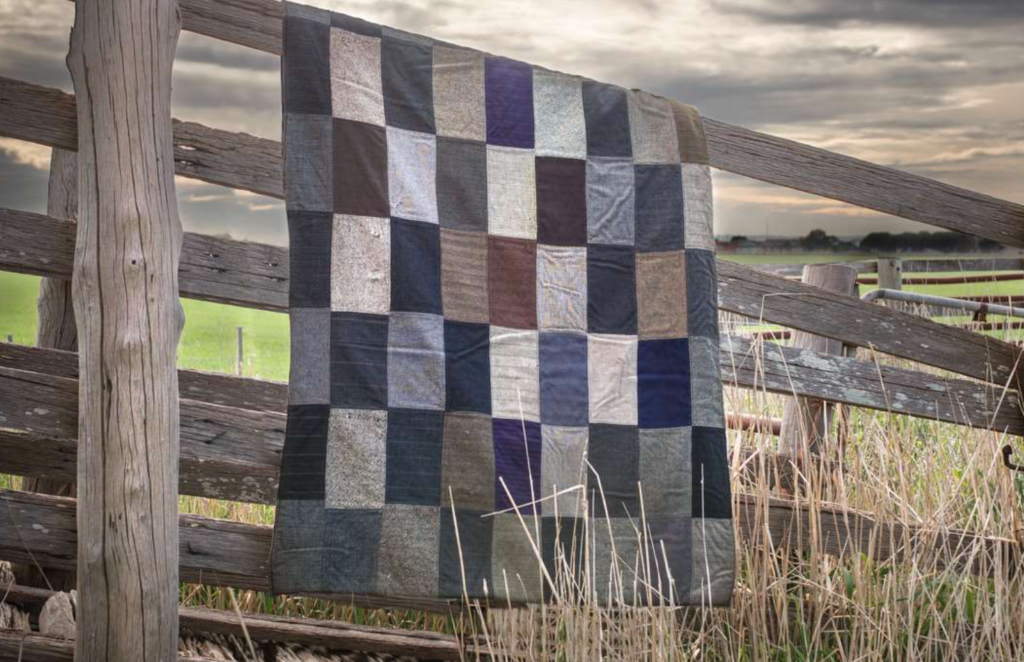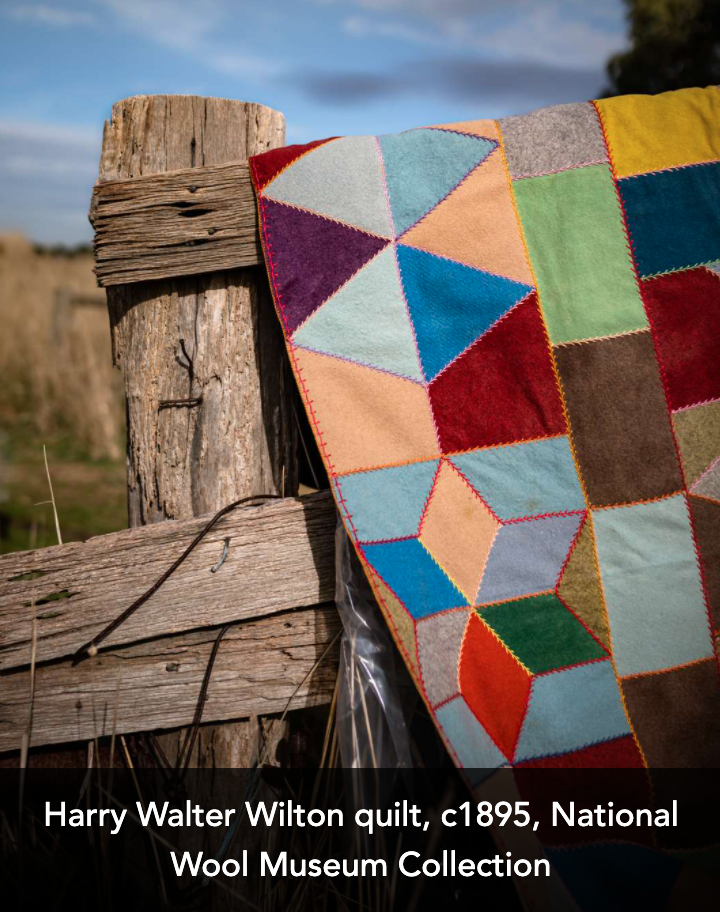Geelong’s National Wool Museum is custodian to one of Australia’s largest and most significant collections of heritage quilts and waggas – with a selection of its treasures about to go on display for the first time in more than two decades.
A selection of the textile artworks, along with objects that tell the story of “making do”, will be on display for the first time in over 25 years during the exhibition ‘Necessity: waggas and the art of making do’ – on display until 5 December.
Born of necessity and the desperate times of the 1890s to 1930s, the ‘wagga’ was the bushman’s blanket, made by pioneering men from old jute wheat sacks and wool bales. As it evolved, women replaced the rough jute sacks with calico flour bags, fabric swatches and bits of old clothes.
Taking inspiration from the wagga, the exhibition presents a range of creations borne of necessity and making do, including a wool fragment recovered from the 1797 Sydney Cove shipwreck, a maid’s dress from 1840, two rare Jimmy Possum chairs, contraband objects from the Geelong Gaol and even an upcycled cardboard sleeping bag.
“The exhibition tells the stories of these treasured family pieces and the people they are connected to,” said City of Greater Geelong Mayor, Stephanie Asher.


“Council is dedicated to the preservation and promotion of Australian heritage quilts and waggas as part of cultural programming at the National Wool Museum. Through ongoing programs such as the National Quilt Register and The Wagga Project along with exhibitions like ‘Necessity: waggas and the art of making do’, we continue to support this commitment and help tell the deeper stories of these treasured pieces.”
National Wool Museum Director, Padraic Fisher and the Australian art of making do had a long and rich history across our nation.
“As we marvel at furniture, dresses and waggas cobbled together from scarce materials available at the time it is vital we recognise the ingenuity and skills of ‘making do’,” said Mr Fisher.
“Exhibitions like this are important because they help connect us – like a handshake across time – they bring us closer to those who made and used these objects and the lives they lived.”
The exhibition begins on August 17.


